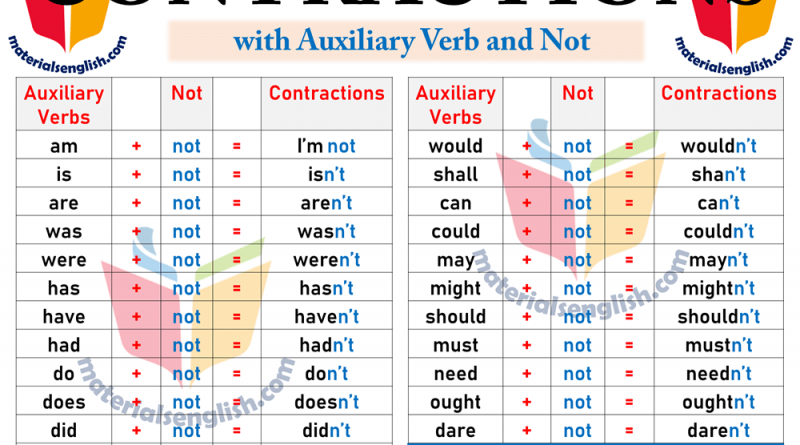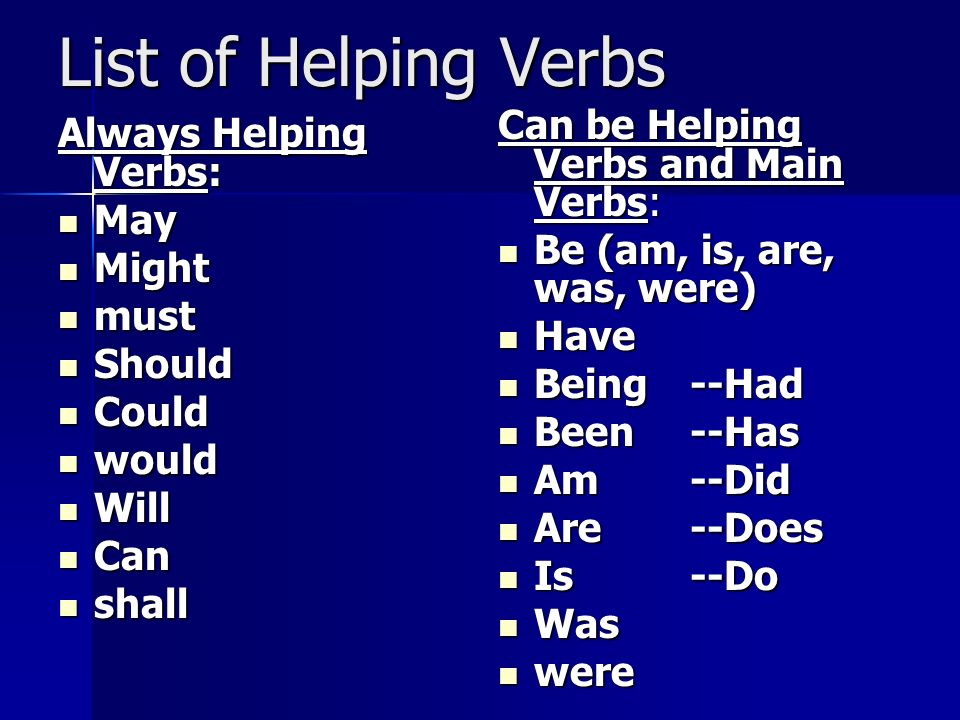

The hunter killed the tiger (Active)=> The tiger was killed by the hunter (Passive) Use of Helping Verbs to Change Active Voice to Passive Voice: In the above sentences the auxiliary verb have is helping the main verbs to express the perfect tense aspect. The perfect aspect is used in continuous form as well to show progressive actions. The perfect aspect explains an action is (was/will be) in a state of progress and it is completed before a particular time. Use of Helping Verbs to denote perfect tenses: In all the above sentences, the helping verbs (is, was) are used to indicate progressive tense aspects. This aspect conveys the notion that an action is continuously occurring in an ongoing fashion. In the progressive or continuous tense the main verb ends in -ing, and preceded by an auxiliary helping verb. Use of Helping Verbs Use of Helping Verbs to denote progressive or continuous tenses:

Note that negative aspects of all the above helping verbs (both auxiliary and modal) are also helping verbs. ought to (indicates command or request).would (habitual action of the past, future likelihood).must (used to indicate confidence or command).will (expresses future aspect or confidence of the subject).Other examples of modal helping verbs are:

For example, in the sentence “Firan may not attend the party” the modal verb may not is indicating a possibility of the main verb attend. They modify the main verb to express possibility, obligation, necessity, potential, etc. Note that modal verbs do not change form when used in a sentence. Modal verbs additionally modify the meaning or action of the main verb. To do: do, does, and did (used to indicate negative form or ask a question or add emphasis)įor example, Aharsi is playing the keyboard Here the helping verb “is” is indicating the present action of the main verb play.Helping Verb “To Be”: am, is, was, are, were, been, be, being (Indicates tense, voice or continuity).Depending on the subjects auxiliary verbs change their form. They areĪuxiliary Verbs are those helping verbs that are used to add emphasis or express tense. In English Language, there are two types of helping verbs. For example In the sentence, “ Swarnali could have used geared cycle in the competition“, both could and have are helping verbs. There could be more than one helping verbs in a sentence. Note that, in a sentence, helping verbs always stand in front of the main verbs. But here the helping verb “can” is expressing the ability of the subject “I”. In this sentence, the main verb is “solve”. Let’s understand the concept of “helping verb” with an example “I can solve this puzzle”. Examples of Helping Verbs / Helping Verbs Example The combination of the helping verb and the main verb together are known as verb phrases. Helping verbs must always be followed by a second verb known as the main verb. They express the time (past, present, or future) of the verb and sometimes convey special meanings related to probability, permission, potential, expectation, etc. Helping verbs provide support to the main verb and add additional meaning. Helping verbs come before the main verb and help it to express the proper meaning. Normally, They alone have no meaning, but they are useful to maintain the grammatical structure of the sentence. Helping verbs are a category of verbs that extends the meaning of the main verb in a sentence. What are Helping Verbs / Definition of Helping Verb


 0 kommentar(er)
0 kommentar(er)
